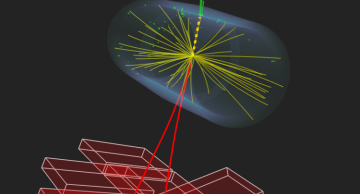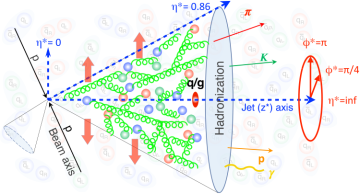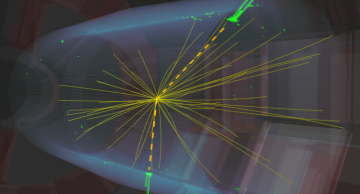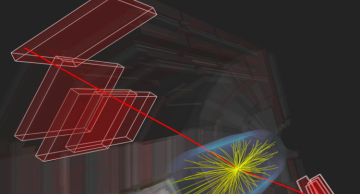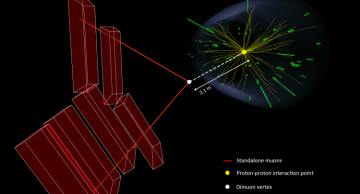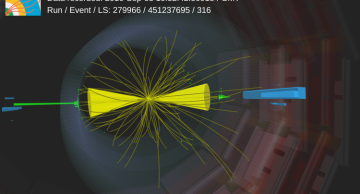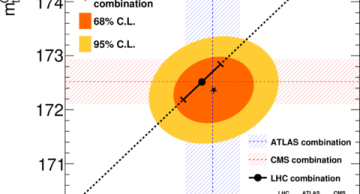A proton-proton collision at a centre-of-mass energy of 13 TeV, recorded by CMS, compatible with the production of a Higgs boson decaying to a J/ψ meson, which decays to two muons (red lines), and a high-energy photon (green box, top). Try to zoom…
News
|
ajafari |
Physics
|
ajafari |
Physics
The universe is governed by four known fundamental forces: gravity, electromagnetism, the weak force, and the strong force. The strong force is responsible for dynamics on an extremely small scale, within and between the individual nucleons of…
|
ajafari |
Physics
The main goal of the LHC physics programme is to deeply understand the fundamental principles of particles and their interactions. As part of this quest, physicists are searching for evidence of new particles, which would potentially confirm the…
|
ajafari |
Physics
Imagine diving into the very core of the universe, where the tiniest pieces that make up everything hold the answers to big cosmic questions. Leading this exciting journey is the CMS team at the Large Hadron Collider (LHC). We are on a mission to…
|
ajafari |
Physics
The more collisions the better, right? To search for new physics, the aim of the LHC experiments at CERN is to collect and investigate as many proton-proton collisions as possible to increase the chances that undiscovered particles are…
|
sohurst |
Physics
Two key properties of neutrinos in the standard model of particle physics (SM) are that they are massless and “left-handed”, i.e. their spin is always opposite to their momentum. The observation of neutrino oscillations posed a big challenge to the…
|
ldelpian |
Physics
The first search for new physics using LHC data collected in Run 3 has been presented by CMS. It was shown during this year’s EPS conference in Hamburg and relied on both the new data and refinements of the trigger system made for Run 3. It marks…
|
ajafari |
Physics
At the subatomic level, interactions between particles are mediated through the exchange of special particles, the force carriers. In the case of electromagnetism, the force is transmitted by photons. They connect particles with electric charge (…
|
ajafari |
Physics
It is easy to recognize your friends in a street if they are standing or walking, but what if they are riding a supercar at a speed of 150 km per hour? In the Large Hadron Collider, if the energy of two partons from two colliding protons is about…
|
ajafari |
Physics
Among all the elementary particles, quarks and gluons (partons) are the only ones that cannot be observed in isolation. In high-energy collisions, such as those occurring at the Large Hadron Collider (LHC), partons undergo a few stages between their…
|
sohurst |
Physics
The ATLAS and CMS Experiments at CERN have just released a new measurement of the mass of the top quark. The new result combines 15 previous measurements to give the most precise determination of the top-quark mass to date.
Among the known…
|
ajafari |
Physics
A new search conducted by the CMS collaboration is exploring Higgs bosons with very high energy. Measuring how many high-energy Higgs bosons are created in proton-proton collisions can tell us about new Higgs interactions, either with known…

